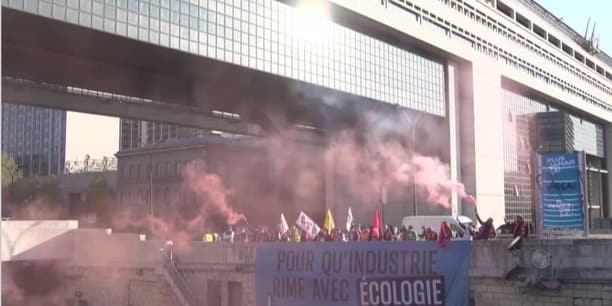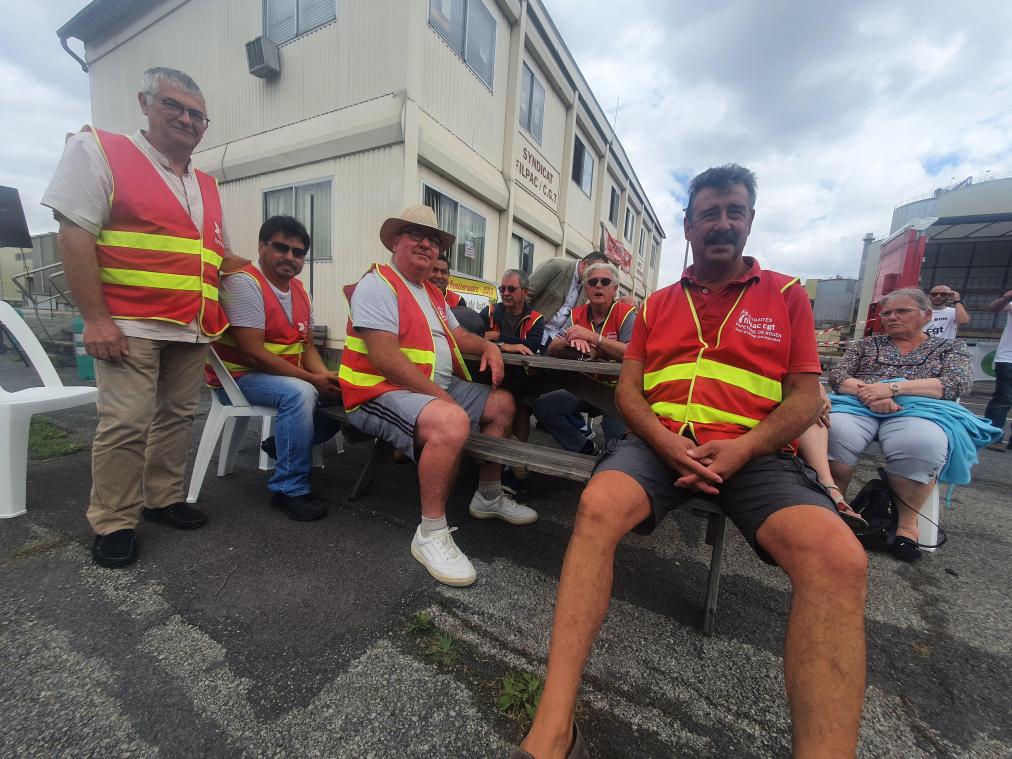While the future of the Chapelle-Darblay paper mill, emblematic of the French industry, seemed uncertain, a glimmer of hope is appearing on the horizon. Cornered by economic and environmental challenges, this historic facility located in Grand-Couronne could benefit from an extension of its existence until 2025 thanks to recent strategic decisions. Marc Ferracci’s firm has obtained a five-month extension to finalize the funding of 245 million euros essential for its revival. This project represents much more than a simple industrial renaissance; it embodies a will for transformation and innovation, inscribed within the framework of Industry 4.0.
The shift towards the production of corrugated paper marks a significant turning point, mitigating the risks of the traditional paper industry. It is an opportunity for the region, but also for economic actors to reaffirm their commitment to a sustainable circular economy. The mayors of Rouen and Grand-Couronne, themselves mobilized for the cause, stress the importance of a swift intervention from the State to ensure the viability of this life-saving project.

The Chapelle-Darblay paper mill, located in Grand-Couronne in Seine-Maritime, is part of a unique industrial dynamic that defies the storms of the sector. Since its opening in 1927, this factory has been a pillar of paper recycling in France. However, at the dawn of 2025, its future oscillates between hope and uncertainties. This text aims to explore the modalities for extending the life of this emblematic site, highlighting recent data, case studies, and practical recommendations.
Table des matières
ToggleAn evolving industrial context
In recent years, the paper sector has experienced major transformations. The emergence of new technologies and the pressure exerted by the circular economy demand a rethought production model. The Chapelle-Darblay paper mill, with its reconversion project towards the production of corrugated paper (PPO), fits perfectly into this trend. This project, which was finalized in May 2022, involves producing 425,000 tons of PPO from 450,000 tons of paper and cardboard to be recycled (PCR) provided by Veolia.
The amount necessary for this project is 245 million euros. The recent decision by Marc Ferracci’s firm to postpone the December 20 deadline for closing the funding underscores the importance of this project not only for Chapelle-Darblay but also for the regional economy. This shows how crucial the stakes are for the local industrial fabric and for the preservation of valuable jobs.
Political and social mobilization: a decisive support
Another crucial aspect that deserves particular attention is the mobilization of political and social actors. In a letter dated December 17 addressed to François Bayrou, Prime Minister at that time, several local elected officials, including the mayors of Rouen and Grand-Couronne, stressed the urgency of the situation. The amount of state aid perceived as necessary, initially estimated at 43 million euros, could be reduced thanks to the separation of the “energy” and “papermaking” assets. This measure would allow Fibre excellence to close the project’s financing more easily.
This citizen and political mobilization is a striking example of how the synergy between the public and private sectors can lead to concrete results. Indeed, collectives such as “Save Chapelle-Darblay!” have managed to galvanize public opinion around the preservation of this emblematic industrial site, reminding of the importance of solidarity in processes of industrial transformation.
A vision for sustainability and the future
In an era where sustainable development and sustainability are at the heart of concerns, the Chapelle-Darblay paper mill presents itself as a key player in the circular economy. The recycling initiatives integrated into its production process testify to a willingness to innovate and adapt the economic model to current demands.
To ensure a viable extension of the life of the paper mill until 2025 and beyond, it is essential to adopt innovative strategies. For example, the implementation of predictive maintenance could improve production efficiency while reducing costs. This technique, which relies on data analysis to anticipate breakdowns and optimize interventions, is already transforming the industrial sector. A report has shown that companies adopting this approach achieve cost reductions of around 20% and downtime reductions of 50%.
It is also important to strengthen stakeholder engagement in terms of innovation. The adoption of advanced technologies, such as artificial intelligence and robotics, could help diversify the products offered and improve manufacturing processes, while paving the way for new markets. The paper mill could thus turn towards the production of eco-friendly packaging, further reducing its environmental footprint.
In short, the potential of Chapelle-Darblay is immense. It relies not only on the successful reconversion of its activity but also on the capacity to mobilize human and technical resources towards a more sustainable and resilient common vision.

FAQ about Chapelle-Darblay: Towards a life extension until 2025
What is the new deadline for the revival project of the Chapelle-Darblay paper mill? The new deadline for funding the project is extended by five months to 2025.
Who is responsible for the revival of the paper mill? Marc Ferracci’s firm has been mentioned as the one who negotiated this agreement with Fibre excellence.
What amount is necessary for the financing of the revival? An amount of 245 million euros is necessary to finalize the project’s financing.
What product will primarily be manufactured in the paper mill after the reconversion? The paper mill will produce 425,000 tons of corrugated paper (PPO).
Which actors have expressed support for the revival project? Elected officials, such as Édouard Philippe, as well as support collectives like “Save Chapelle-Darblay!” have expressed their support for the revival of the site.
What role does the State play in the revival of the paper mill? The State is committed to making its best efforts to help gather the necessary financing for the project.
What circumstances led to the postponement of the deadline? The postponement was decided due to exceptional circumstances and the need for a serving minister to sign the agreement.





